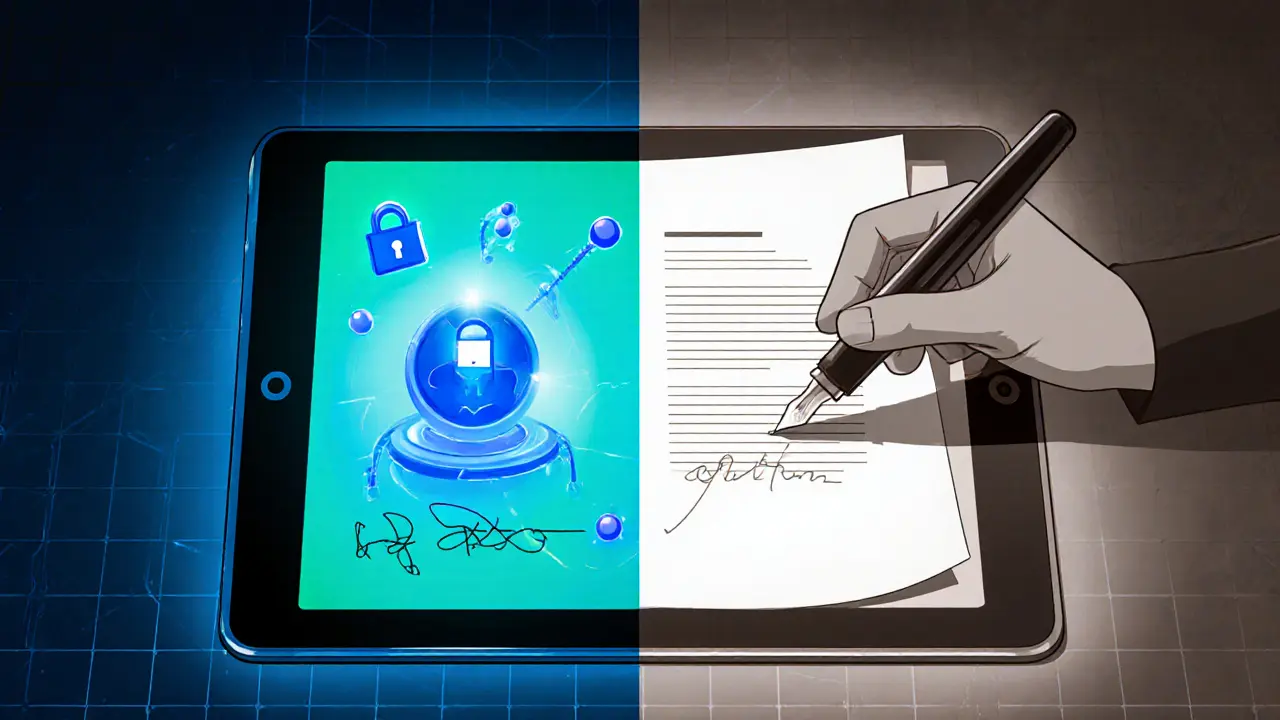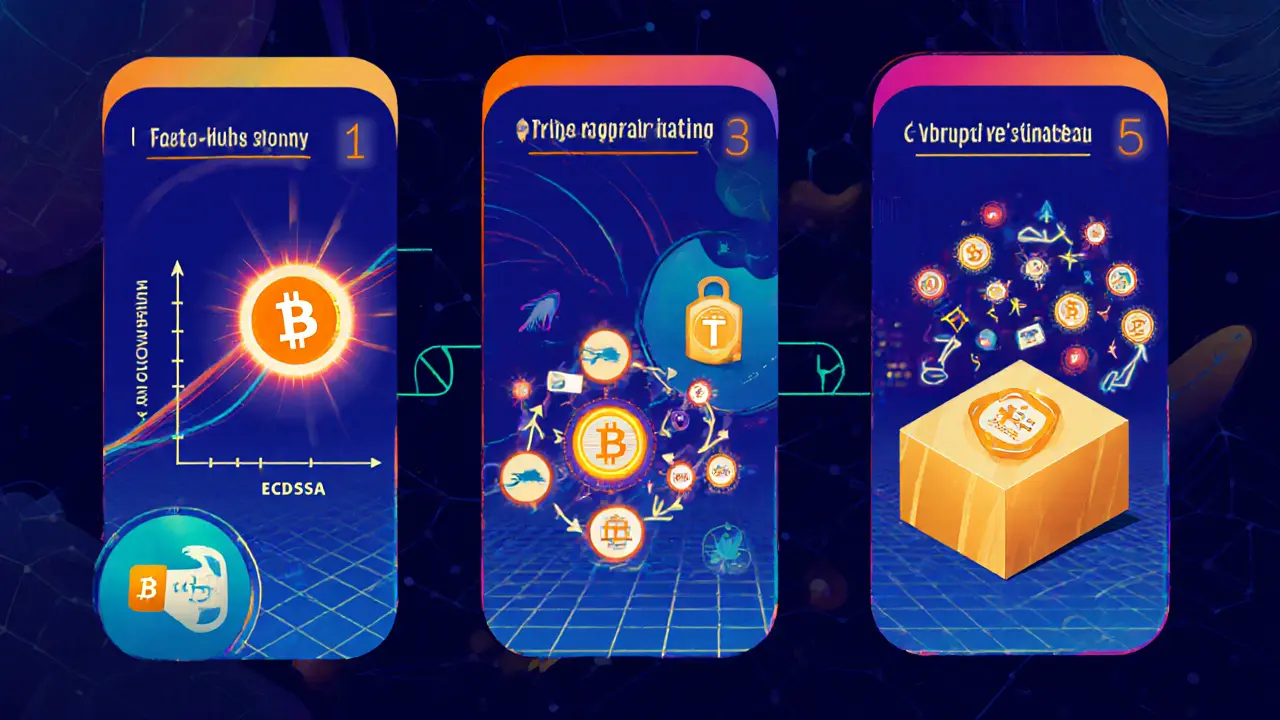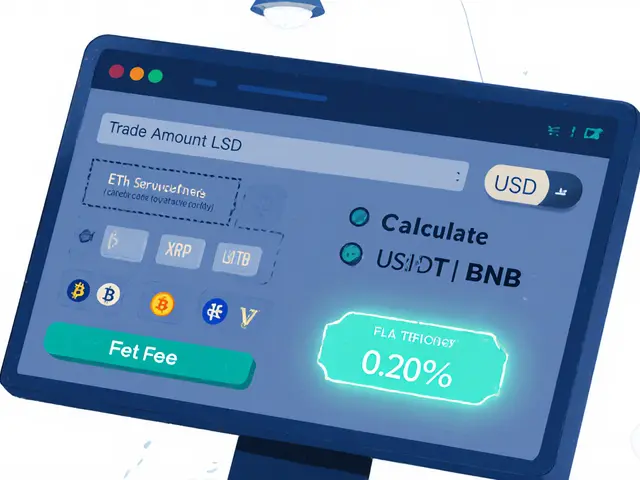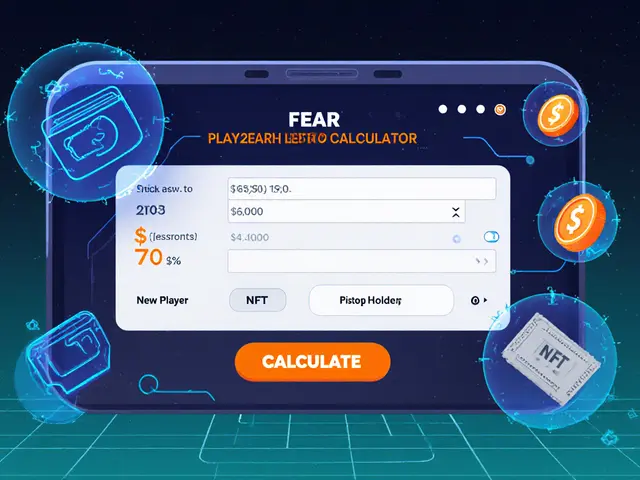- Home
- ::
- Digital Signatures vs Traditional Signatures in Crypto: A Practical Comparison

Digital Signatures vs Traditional Signatures in Crypto: A Practical Comparison
Digital vs Traditional Signatures Comparison Tool
Cryptographic proofs generated using asymmetric cryptography. Used in Bitcoin, Ethereum, and other blockchain networks.
- Security: Mathematically proven, resistant to forgery
- Verification: Automated, machine-readable
- Scalability: Handles millions of transactions
- Non-repudiation: Immutable proof of authorship
- Use Cases: Multi-sig, smart contracts, signature aggregation
Physical marks made with pen on paper, relying on visual inspection for authenticity.
- Security: Subjective, vulnerable to skilled forgery
- Verification: Manual, human-based
- Scalability: Limited by human capacity
- Non-repudiation: Can be contested in court
- Use Cases: Legal documents, deeds, off-chain agreements
ECDSA
Elliptic Curve Digital Signature Algorithm
Used in Bitcoin, Ethereum
Schnorr
Linear signatures
Enables key aggregation
BLS
Aggregate signatures
Reduces block size
| Criteria | Digital Signatures | Traditional Signatures |
|---|---|---|
| Security | Cryptographic, resistant to forgery | Subjective, vulnerable to skilled forgery |
| Scalability | Automated verification of millions | Manual verification limits throughput |
| Non-repudiation | Mathematical proof of authorship | Can be contested, requires expert testimony |
| Implementation Cost | Initial PKI setup, software development | Low upfront cost, high labor cost at scale |
| Legal Acceptance | Recognized in many jurisdictions | Universally accepted for paper contracts |
Conclusion
In cryptocurrency and blockchain applications, digital signatures are essential for security, scalability, and automation. They provide cryptographic proof that is impossible to forge, unlike traditional signatures which are subjective and manually verifiable. While traditional signatures remain important for legal documents outside the blockchain, digital signatures dominate high-volume, high-security environments.
Modern algorithms like Schnorr and BLS signatures offer even greater efficiency and scalability benefits for blockchain networks, making them the preferred choice for next-generation crypto applications.
Quick Take
- Digital signatures use asymmetric cryptography; traditional signatures rely on handwriting.
- In crypto, algorithms like ECDSA (Elliptic Curve Digital Signature Algorithm) provides short keys and fast verification dominate.
- Digital signatures guarantee non‑repudiation, tamper‑evidence, and automated verification, while traditional signatures are subjective and manual.
- Advanced schemes such as Schnorr Signatures enable key aggregation and multi‑signatures with linearity or BLS Signatures allow signature aggregation across many signers, cutting block size are reshaping blockchain scalability.
- Adoption is soaring: the global digital‑signature market hit $5.7B in 2023, and crypto networks process trillions of dollars annually using these algorithms.
What Is a Digital Signature?
When you see the term digital signatures in a crypto wallet or a smart contract, you’re looking at a piece of math that proves a transaction came from the holder of a private key. Digital Signatures are cryptographic proofs generated by applying a private key to a hash of the underlying data. The result is a unique string that can be verified by anyone who knows the corresponding public key.
The whole process hinges on asymmetric cryptography: the private key signs, the public key verifies. No secret ever leaves the signer’s device, which means the network never sees the private key itself. This design is what lets Bitcoin, Ethereum, and countless other blockchains run without a central authority.
How Do Traditional Handwritten Signatures Work?
Traditional Signatures are physical marks made with a pen that represent a person’s intent to approve a document. Their authenticity is judged by visual comparison-experts look at stroke pressure, slant, speed, and idiosyncrasies.
Because verification is human‑based, it’s inherently subjective. A skilled forger can mimic the visual style, and the signature can degrade over time or become illegible. Legal systems still accept them for many contracts, but they lack the mechanized traceability needed for high‑frequency, high‑value crypto transactions.
Technical Architecture: From Hashes to Public Keys
Creating a digital signature starts with a cryptographic hash (SHA‑256 is common). The hash compresses the entire document into a fixed‑size fingerprint. That fingerprint is then fed into a signing algorithm together with the signer’s private key.
Various algorithms exist, each with its own trade‑offs. ECDSA uses elliptic‑curve mathematics to achieve security comparable to RSA but with much shorter keys (e.g., a 256‑bit curve versus a 3072‑bit RSA key) is the workhorse for Bitcoin and Ethereum. It stems from the discrete‑log problem, making it resistant to known attacks while keeping computation light for mobile wallets.
Newer schemes such as Schnorr Signatures are provably secure, non‑malleable, and enable linear aggregation of multiple signers into a single compact signature were introduced to Bitcoin via the Taproot upgrade (BIP‑340). BLS Signatures provide deterministic, aggregate‑able signatures that can compress dozens of individual signatures into one, a feature useful for block‑level aggregation in proof‑of‑stake chains.
All these algorithms rely on a Public Key Infrastructure (PKI) that distributes and binds public keys to identities via digital certificates. In pure blockchain settings, the public key is often embedded directly in the transaction, eliminating the need for a central certificate authority.
Security, Non‑Repudiation, and Tamper Resistance
Digital signatures excel in three security dimensions:
- Authentication: Verification is a mathematical operation-if the public key matches, the signature is valid.
- Integrity: Any change to the signed data produces a different hash, instantly breaking the signature.
- Non‑repudiation: Because only the holder of the private key could have generated the signature, the signer cannot later deny involvement.
Traditional signatures lack these guarantees. A forger who reproduces the pen strokes can fool a visual examiner, and a signed paper can be altered without leaving a cryptographic trace.
In practice, crypto exchanges cite digital signatures as the reason they can settle billions of dollars daily without manual dispute resolution. The mathematical proof is indisputable and can be audited by anyone on the network.

Use Cases in Cryptocurrency and Blockchain
Beyond simple value transfer, digital signatures unlock advanced capabilities:
- Multi‑signature wallets: Require two or more private keys to approve a transaction. Schnorr’s key aggregation hides the number of signers, making multi‑sig transactions look like ordinary ones.
- Smart contract triggers: Contracts can verify a user’s signature on‑chain and execute code automatically, removing any need for off‑chain approval.
- Signature aggregation: BLS signatures allow a block to contain a single aggregate signature for all transactions, reducing on‑chain data by up to 50%.
- Threshold signatures: DAOs can require a quorum of members to sign a proposal without exposing individual signatures, enhancing privacy.
These features simply aren’t possible with handwritten signatures, which would require manual processing for every approval-an impractical approach for a network handling millions of transactions per day.
Performance and Scalability Considerations
Real‑world benchmarks show ECDSA verification takes roughly 0.2ms on a modern CPU, while RSA verification can be 10‑20× slower due to larger key sizes. Schnorr adds a slight overhead but gains massive savings when aggregating signatures-Bitcoin’s Taproot upgrade can boost transaction capacity by 20‑40%.
Developers also appreciate deterministic signatures (e.g., EdDSA) because they remove nonce‑reuse vulnerabilities, a common source of private‑key leakage.
Implementation Complexity and Adoption
Deploying digital signatures demands a PKI‑style setup: generate key pairs, protect private keys (hardware wallets, HSMs), distribute public keys, and integrate verification code. Open‑source libraries like libsecp256k1, OpenSSL, and Bouncy Castle provide battle‑tested implementations, and community forums are full of step‑by‑step guides.
Traditional signatures need no software-just a pen and a piece of paper. However, scaling manual verification across thousands of contracts quickly becomes a bottleneck.
Regulatory bodies worldwide now recognize digital signatures as legally binding (U.S. ESIGN Act, EU eIDAS). This legal backing fuels enterprise adoption beyond crypto, into banking, insurance, and supply‑chain sectors.
Choosing the Right Signature Scheme
When picking a scheme for a new blockchain or a crypto‑related product, ask these questions:
| Criterion | Digital Signatures (ECDSA/Schnorr/BLS) | Traditional Signatures |
|---|---|---|
| Security | Cryptographic, resistant to forgery | Subjective, vulnerable to skilled forgery |
| Scalability | Automated verification of millions of signatures | Manual verification limits throughput |
| Non‑repudiation | Mathematical proof of authorship | Can be contested, requires expert testimony |
| Implementation Cost | Initial PKI setup, software development | Low upfront cost, high labor cost at scale |
| Legal Acceptance | Recognized in many jurisdictions | Universally accepted for paper contracts |
If your project handles high‑frequency transactions, needs programmable verification, or plans to use multi‑sig or threshold features, a modern digital scheme is the clear winner. For low‑volume, purely legal documents that must be physically signed (e.g., a deed), a traditional signature may still make sense.
Checklist for Deploying Digital Signatures in Crypto Projects
- Generate strong, unique private keys (use hardware wallets or secure enclaves).
- Choose an algorithm that matches your performance and security needs (ECDSA for legacy compatibility, Schnorr for aggregation, BLS for block‑level compression).
- Implement robust key‑management policies (rotate keys, revoke compromised keys, store backups securely).
- Integrate a well‑audited library (libsecp256k1, ed25519‑ref, BLS12‑381 implementations).
- Test verification across multiple platforms (desktop, mobile, hardware wallets).
- Confirm legal compliance with relevant e‑signature regulations (ESIGN, eIDAS).
Frequently Asked Questions
Can a digital signature be forged?
Only if an attacker obtains the signer’s private key or breaks the underlying cryptographic hardness assumption (e.g., solving the elliptic‑curve discrete‑log problem). With properly generated keys and up‑to‑date algorithms, forging is computationally infeasible.
Do traditional signatures have any place in crypto?
They’re useful for off‑chain legal agreements (e.g., partnership contracts) that later get referenced on‑chain. Inside the blockchain, they’re impractical because you can’t programmatically verify a handwritten mark.
What’s the main advantage of Schnorr over ECDSA?
Schnorr signatures are linear, allowing multiple public keys to be aggregated into a single signature. This reduces transaction size, hides the number of signers, and eliminates signature malleability issues present in ECDSA.
Are BLS signatures ready for production?
Several proof‑of‑stake networks (e.g., Ethereum 2.0’s upcoming phases) are already integrating BLS for committee signatures. The libraries are mature, but developers should still audit implementations for side‑channel risks.
How does quantum computing threaten current digital signatures?
Shor’s algorithm can solve the discrete‑log and integer‑factorization problems, breaking ECDSA, RSA, and related schemes. Post‑quantum candidates like CRYSTALS‑Dilithium and Falcon are being standardized to replace them before large‑scale quantum computers appear.


 Finance
Finance





Write a comment